Watching the daring acrobatics on TV’s American Ninja Warrior, I would mutter to myself, “The obstacles don’t look that hard.” That’s what I thought until I tried it myself.
My wife and I own and perform with a cirque entertainment company. Someone from American Ninja Warrior saw us perform and reached out to ask us to submit an application. Expecting our second child, my wife deferred but insisted I apply. After filling out lengthy forms to share my story and compiling a short video of outdoor workouts and clips of our small but growing family, I clicked submit.
Four months passed and I had forgotten about the submission. Checking my phone after a morning of treating patients and writing training programs as an orthopedic physical therapist and strength coach, I noticed a missed call and voicemail. Dismissing the number from Hollywood, California, as spam, I listened to the voicemail anyway.
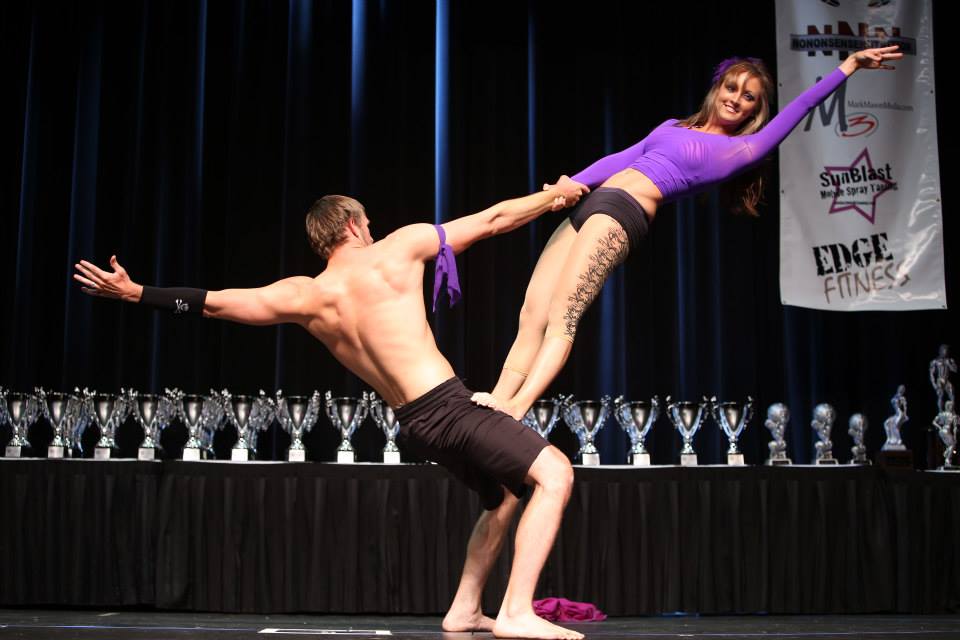
The caller introduced himself as a producer from American Ninja Warrior and asked that I call him. I returned his call, and he said, “I love your story and wanted to personally invite you to take on the American Ninja Warrior course.” I was in. He gave me the details and told me that the competition would be held in just over two weeks.
After thanking him for the opportunity, I called my wife to let her know the dates of the competition. It would be less than a week before her due date. Although the doctor advised her not to travel, she was not going to miss the competition.
I dove in to study obstacles from past seasons of American Ninja Warrior. Soon, I realized that my current training might be lacking. I had been rock climbing once and had never run up a warped wall, but picking up heavy things and carrying them around was common for me. I leaned on my skills from tree climbing, doing daily pullups, and performing aerial circus acts to have me ready. Above all, I knew I had the mindset to conquer bigger obstacles than I would encounter on the course.
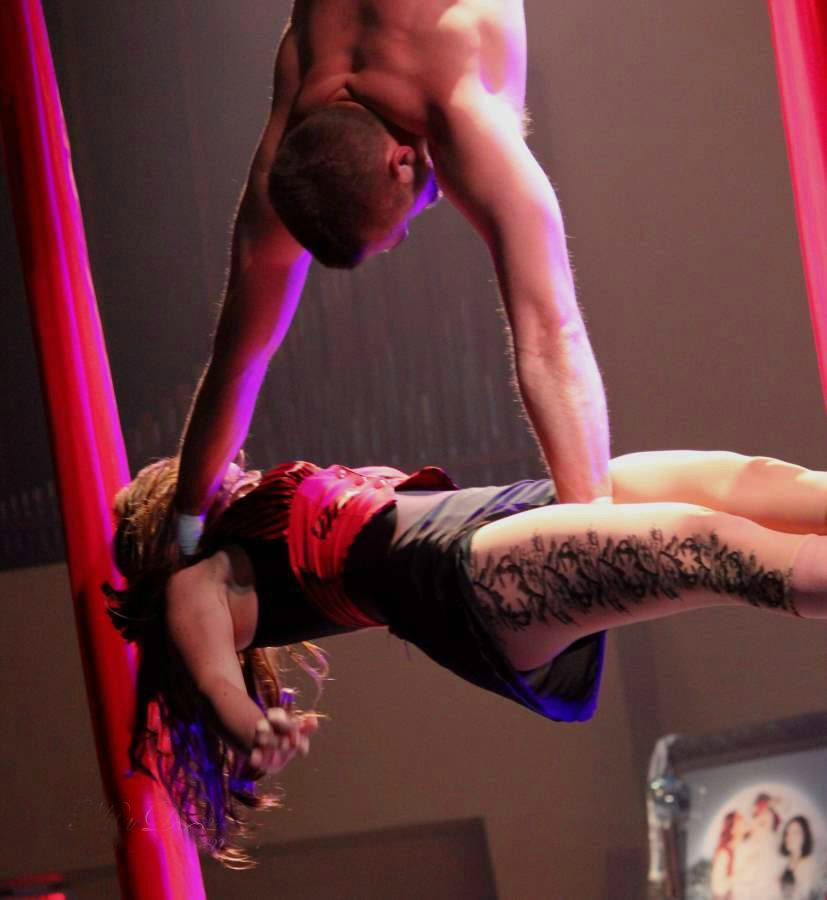
The producers asked me to arrive a day early to capture B-roll footage. When I showed up in full camo as the Healthy Hunter, a producer suggested I wear bright colors. I changed into a bright orange shirt that would look better on television. Then, we sat down in front of cameras and a crew so I could answer questions and tell my story. Afterward, the cameras rolled as I shot my bow, climbed a tree, and ran through a wooded park.
On the day of the competition, I reported to the designated location around noon. I had my pack full of water, two thermoses of hot coffee, protein bars, and enough trail mix to fuel me through the night, plus a sleeping bag and enough camo to make some of the other competitors uncomfortable.
Filled with anticipation of the unknown, I joined the 200 other competitors. We signed waivers, had our photos taken, and received our starting positions for the night. We were then ushered to a parking lot and given strict orders on where to go, as we were not allowed to see the course. Some obstacles are staples, while new obstacles maintain an element of surprise for the competitor and audience.
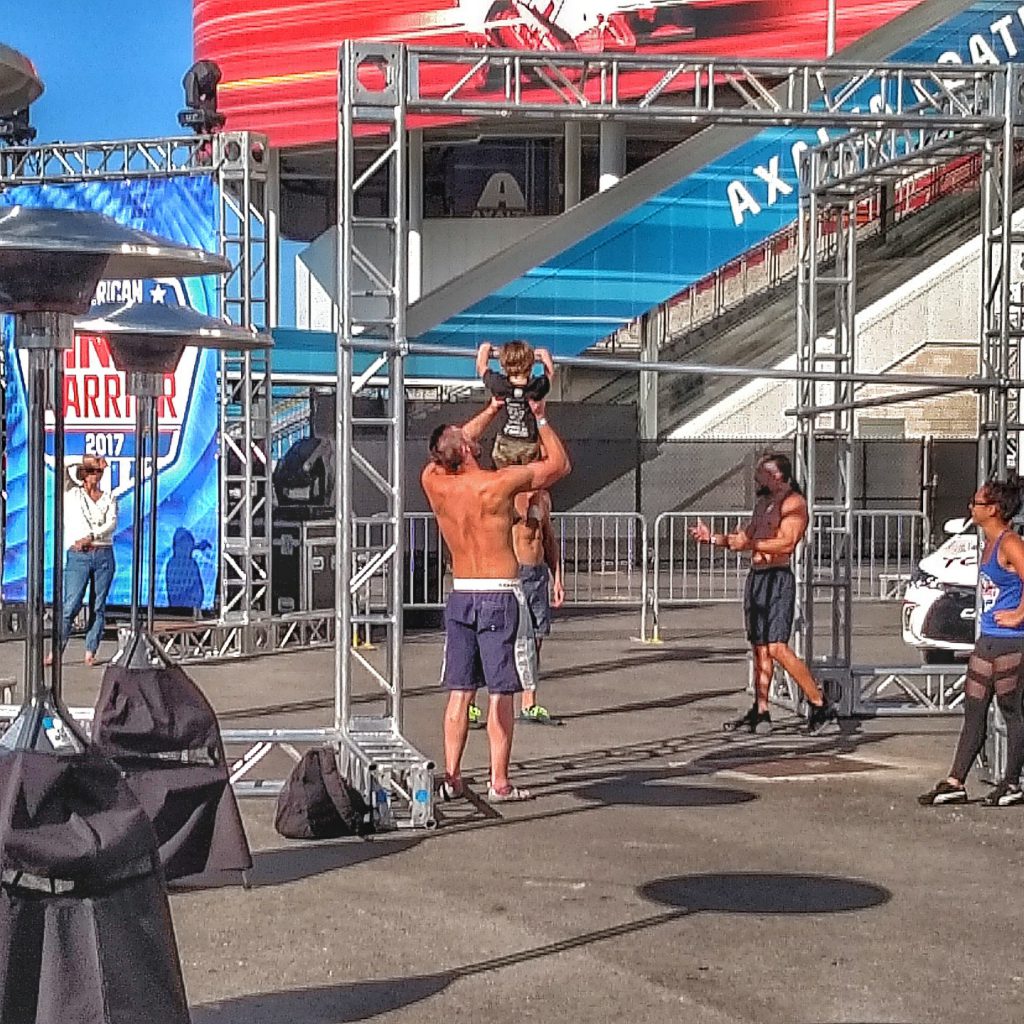
Since the competition would not start until after sunset to ensure proper lighting, we had time on our hands. Some competitors took naps while others were working out. I hit the snack table and began talking with veteran competitors. Competitors were open and honest, sharing insights and personal experiences.
From my sports background, it didn’t seem normal to talk to opponents, so this openness felt a little strange. It was obvious we were not competing against each other but against the course. We were the ninjas, a team sharing information to conquer the obstacles ahead.
As the sunlight faded, the producers took a roll call before laying down the ground rules. We were then escorted to see the course. During our one and only look at the course up close, one of the builders demonstrated each obstacle as specific instructions were given. Some obstacles required facing certain directions and not turning our backs to the camera. Some had limitations on how we could use our legs. Others had specific handholds we had to grab before leaping toward the next handhold.
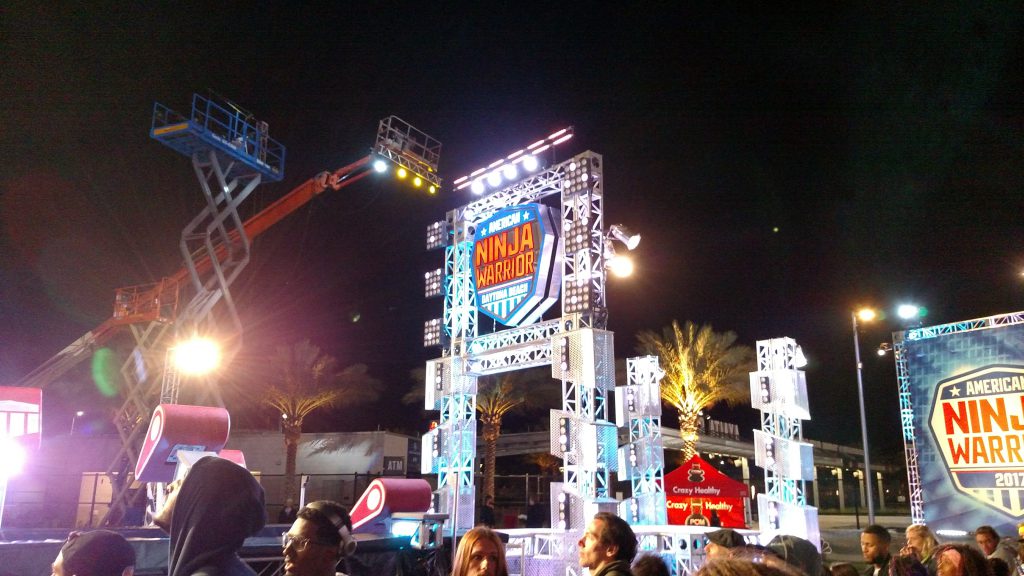
From a viewer’s perspective, it may seem odd the way some obstacles are handled. But these nuances make the obstacles more challenging and, apparently, look better on prime-time television. The walkthrough was quick, and within a few minutes, we were backstage. Finally, we were allowed to enter the designated competitor viewing area, where we settled in for the night.
Backstage, competitors with experience on similar obstacles shared their thoughts. Others shared how they were going to approach new obstacles while being able to see a few testers run the course. The test runs allowed the production crew a final check on cameras and lighting while giving the crowd some excitement as they settled into their seats.
With music blaring and lights flashing, the announcers welcomed the crowd to American Ninja Warrior while the first of the competitors were called to the course. From our vantage point backstage, we could see competitors taking on the first obstacle, but we had to rely on the big screen to see the rest of their runs.
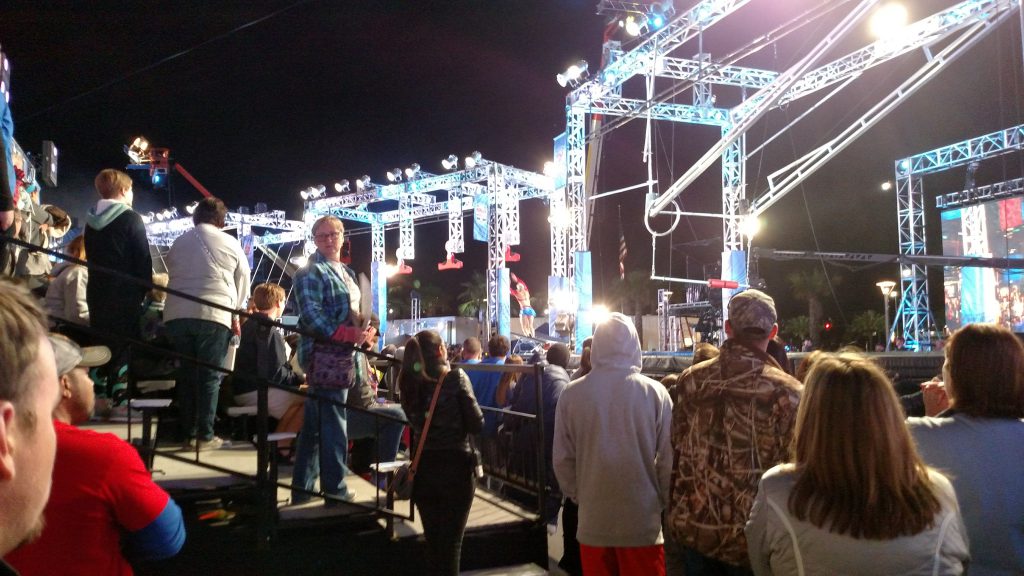
We could hear the crowd cheering as obstacles were completed. The gasps and sighs of disappointment as competitors fell created moments of silence backstage. The crowd’s involvement kept our energy high through the long night.
When crew members called my name, I made my way to the prep area, receiving high-fives, good luck wishes, and encouraging words along the way. After being double-checked for approved clothing, I continued on toward the starting line.
Standing on-deck, I jumped around to stay warm while watching the competitor before me run up the stairs to the starting line. In his hurried excitement, he tripped going up the stairs, almost falling on his face. I could tell that it had shaken him a little when he hesitated as the starting buzzer sounded. He slipped on the first obstacle and never recovered, falling into the water. After he crawled out, I was motioned to the starting line while the crew made sure the obstacles were dry.
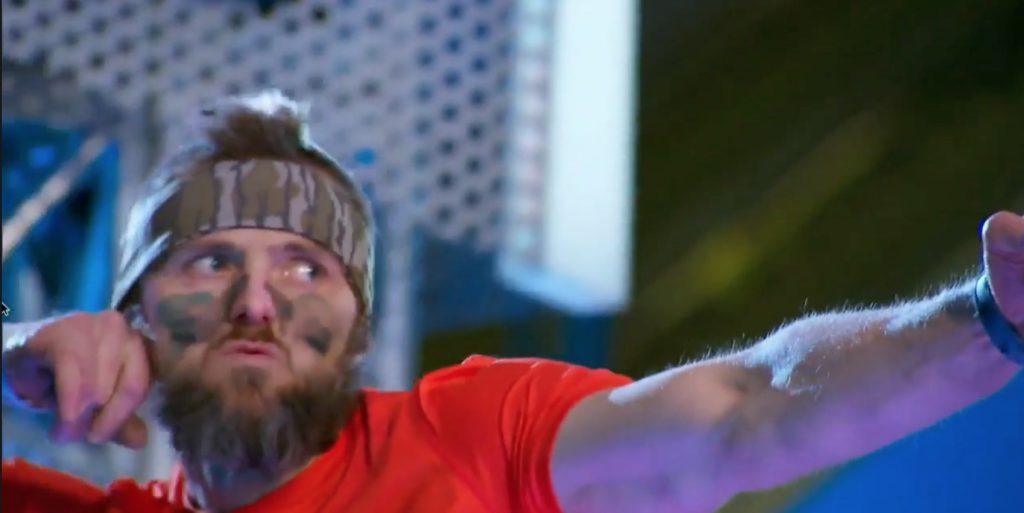
The announcer called my name, and I made sure to take my time and hit every step. The crowd began to cheer as I got to the starting line and posed like an archer drawing a bow. I waved at my wife, who was holding our son in her arms and standing next to the course.
The buzzer sounded, and I shot off of the starting line. Leaping across the water like a frog hitting lily pads, I made it past the first obstacle. Then, I leapt for a rope, swung over the water, and landed safely. I had flown through two obstacles. Keeping my momentum, I climbed up to the third obstacle, where I wrapped my arms and legs around a tree-sized pole. Gravity took over. The pole bucked like a mule as it flew down at an angle toward a cushioned landing pad, and I held on tightly until it stopped and swung violently forward. I released my stranglehold to slam into the cushioned — but certainly not soft — landing pad. Standing up, I waved at my family while shaking the cobwebs of whiplash out of my head.
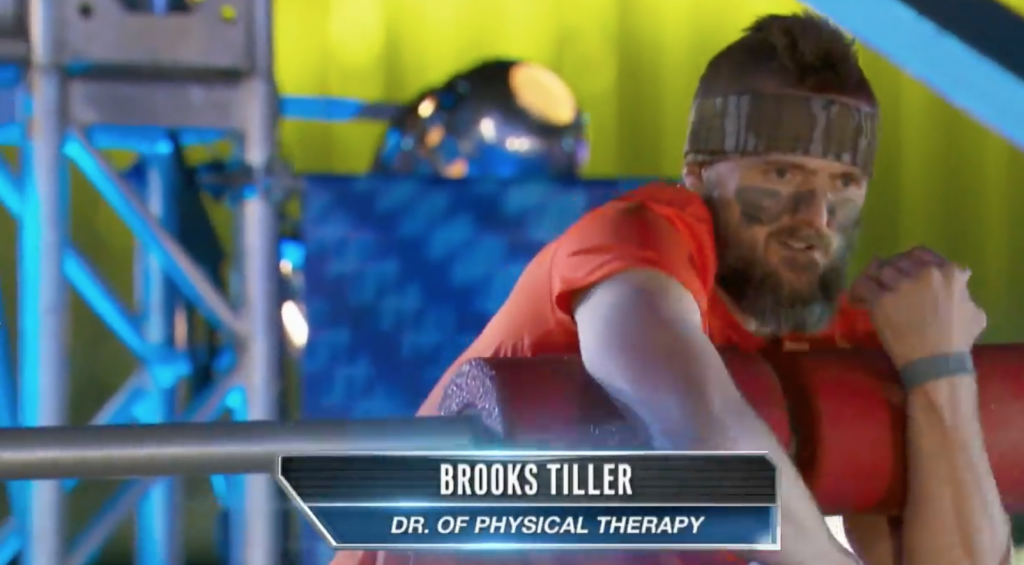
Next, I faced a trampoline, which was one of my biggest concerns. I had severely sprained my ankle less than a week before the competition. Since I was still dealing with some weakness and instability, my balance was hindered. The need to use a trampoline to catapult myself to the next obstacle, known as “The Wingnut,” caused me to pause for a moment to focus.
This was the debut for the Wingnut, which consisted of three small, swinging pendulums. Each had handholds on either side. The small ledges of each wingnut decreased in size along the course.
Standing on the trampoline, I reached up and grabbed the first wingnut. With only a small bounce I was hanging from the small handhold and began to swing my legs to create momentum, making the wingnut swing side to side. The goal was to swing as close to the second wingnut as possible before launching to grab the next set of ledges.
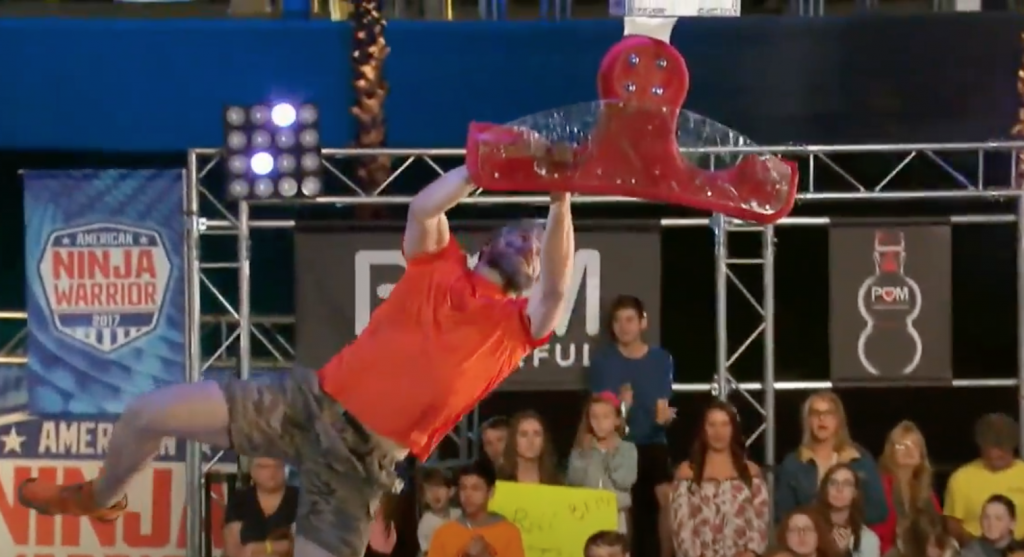
Flexing my back and elbows, I pulled my body up as the first wingnut was nearing the end of its range. Then I pulled up my legs as I released my grip to launch myself to the next. The crowd gasped as I landed short, both of my hands gripping the right side of the second wingnut before I pulled myself up to move my left hand into the proper position. Once again I pumped my legs from side to side to create momentum. Using a kipping pullup move again, I released my hands and reached for the final set of handholds.
Flying through the air, I extended my arms for the final wingnut. My left hand came up short and missed the handhold. The crowd’s gasp seemed to suck all the oxygen out of the midnight air. With my right hand grasping the fingertip-wide ledge, I focused on getting my left hand securely on the opposite handhold. The wingnut shifted with my body weight as I raised my left hand to regain my grip.
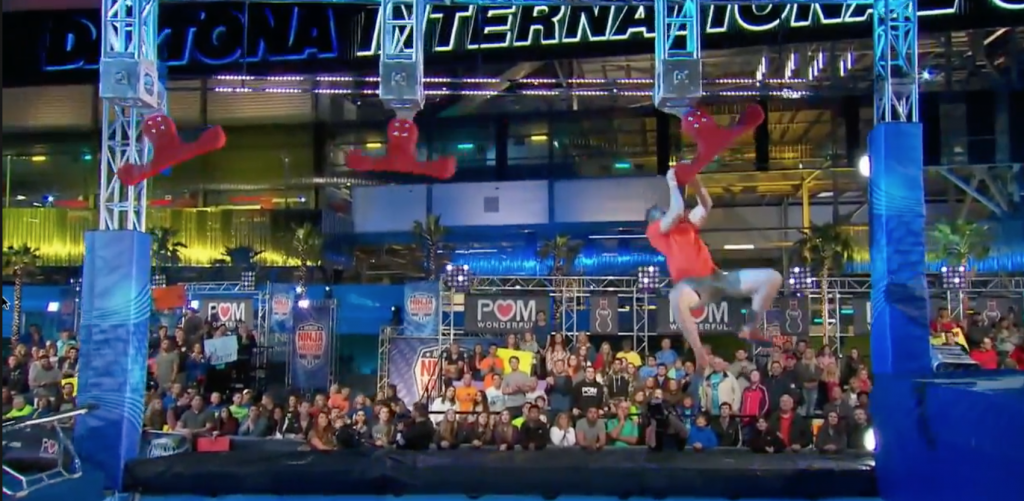
Everything seemed to move in slow motion as my grip slipped finger by finger. My hand came off the ledge, and the red wingnut slipped away. Weighing a good 50 pounds more than most competitors, I felt like Shamu the whale splashing into the water. I surfaced, punching the air out of frustration. As I hopped out of the water, a bright-red towel was thrown around me. I was ushered off to be interviewed in front of lights and cameras about my failure as the course was reset for the next competitor.
After I’d taken on the course and fallen short, the drive home seemed a little longer. Heading back to work as a strength coach and physical therapist, I was unable to share any details with coworkers or clients, even though many asked. Within a week we were on the road again to the hospital to welcome our baby girl into the world. The return to reality consisted of more coffee, less sleep, and plenty of quality family time — along with dodging questions from many friends.
The competition occurs months before airing on national television. Part of the paperwork states that competitors must not reveal information until after the national broadcast. Over the next few months, I had conversations with producers. They requested extra video clips and photos as they were making the final edits. But the producers never confirmed which few people would be featured during the airing of the show.
We gathered with family and friends a few months after the event to watch American Ninja Warrior on television. Soon my name and camo-smeared face flashed on the screen. It stung to watch myself fail, but I remain grateful for the opportunity.
After the airing I began to receive messages. Some were congratulating me and encouraging me. But my favorites were notes from those who were encouraged by my appearance. Some avid outdoorsmen said they were sparked to improve their fitness and health. Others noted that seeing “The Healthy Hunter” made them interested in hunting and the outdoors as a way to take their fitness and health to a new level.
Read Next: Understanding Fitness: Strength, Power, Endurance, Capacity

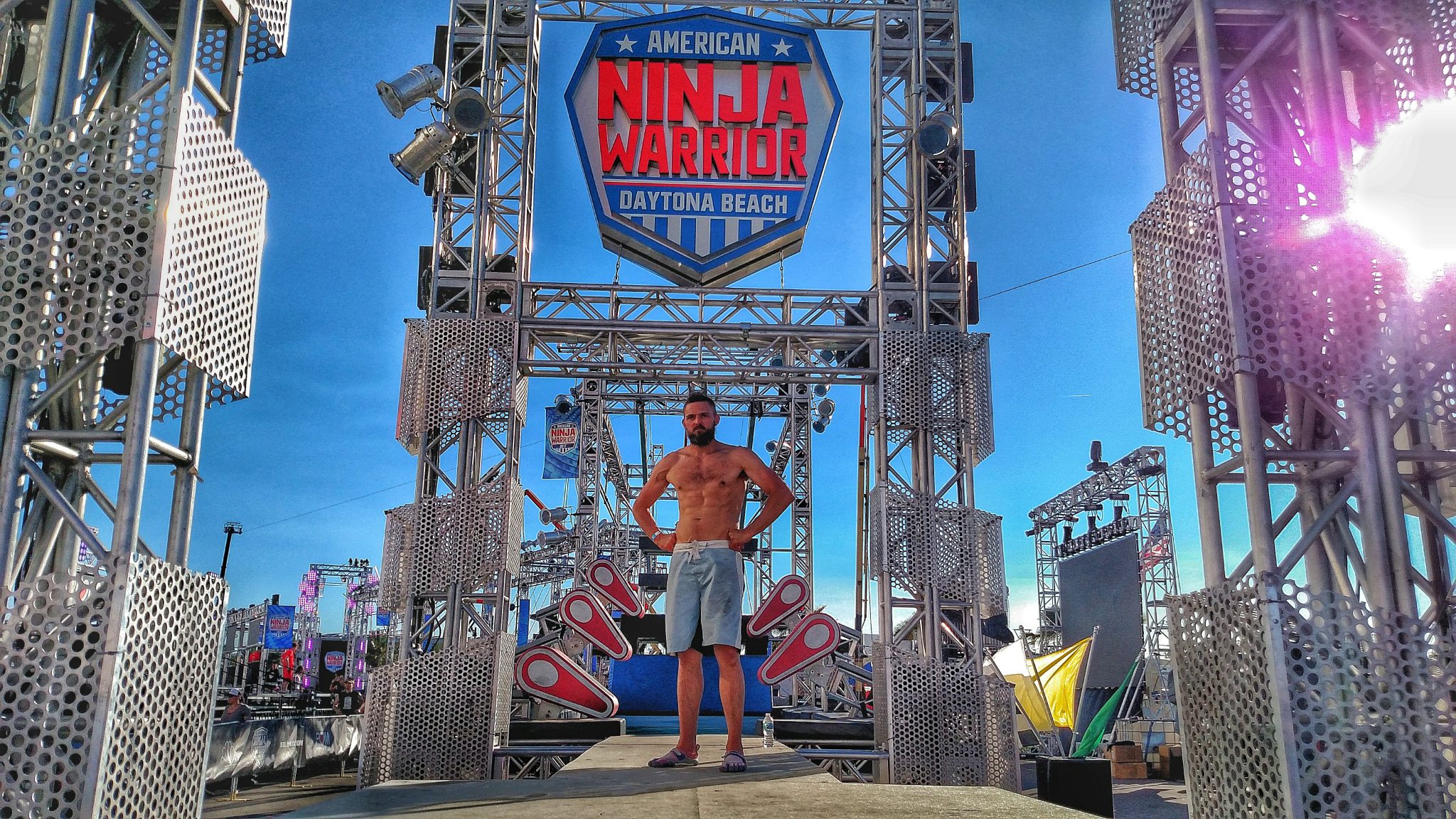
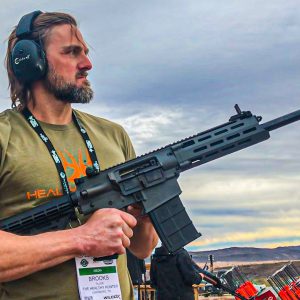
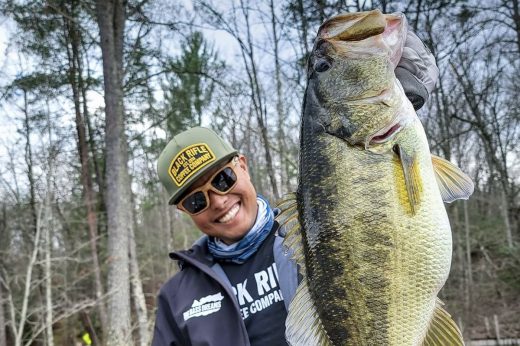
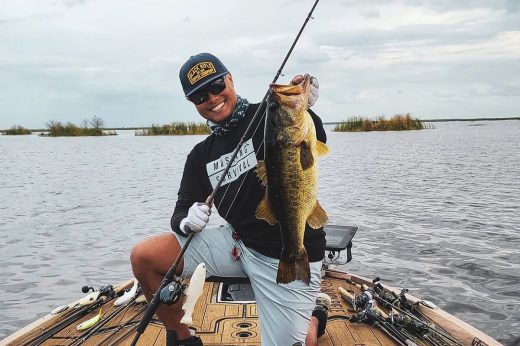
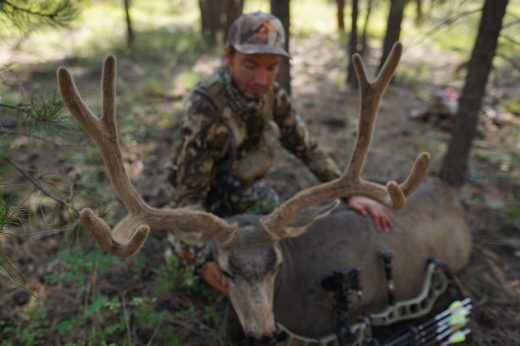


Comments